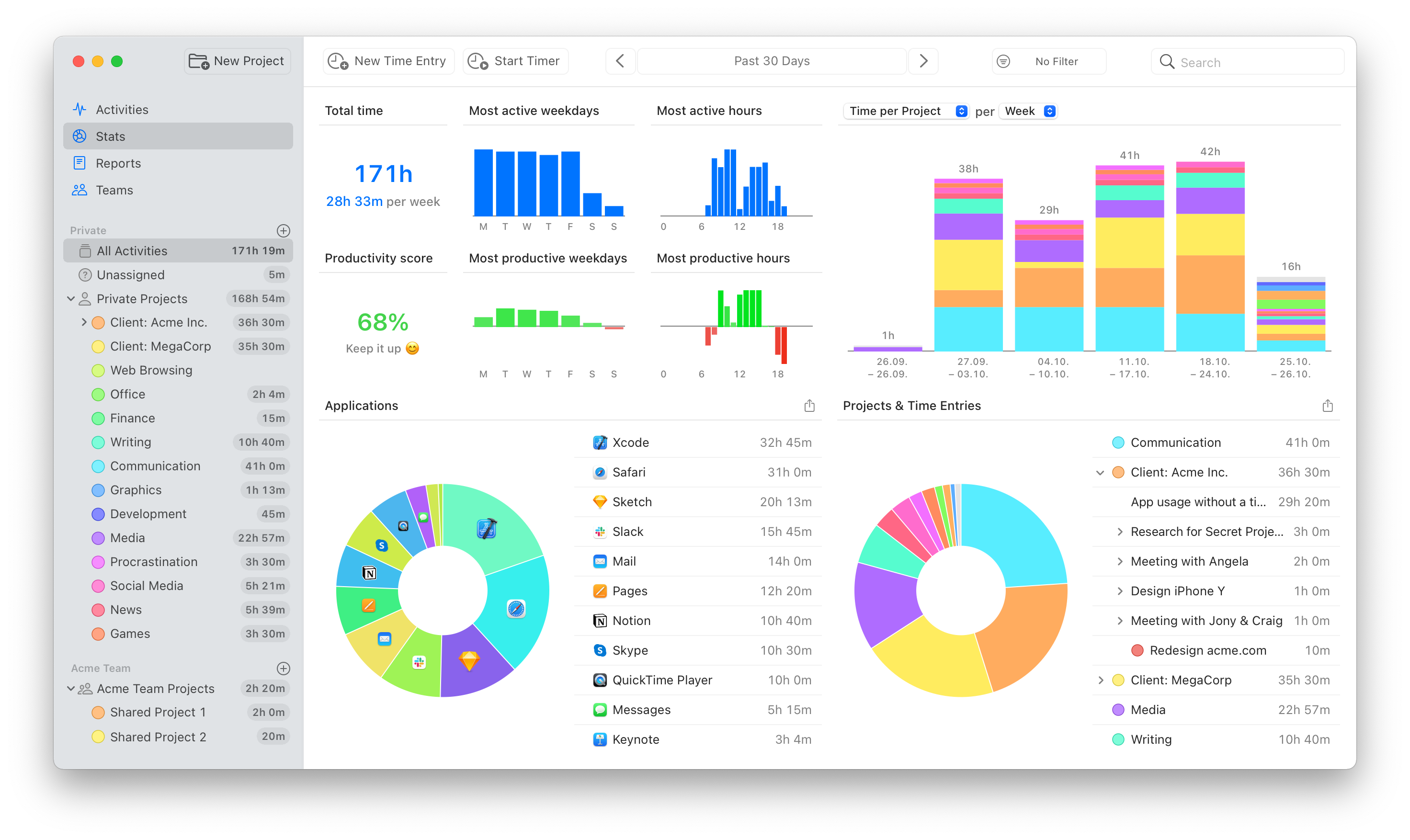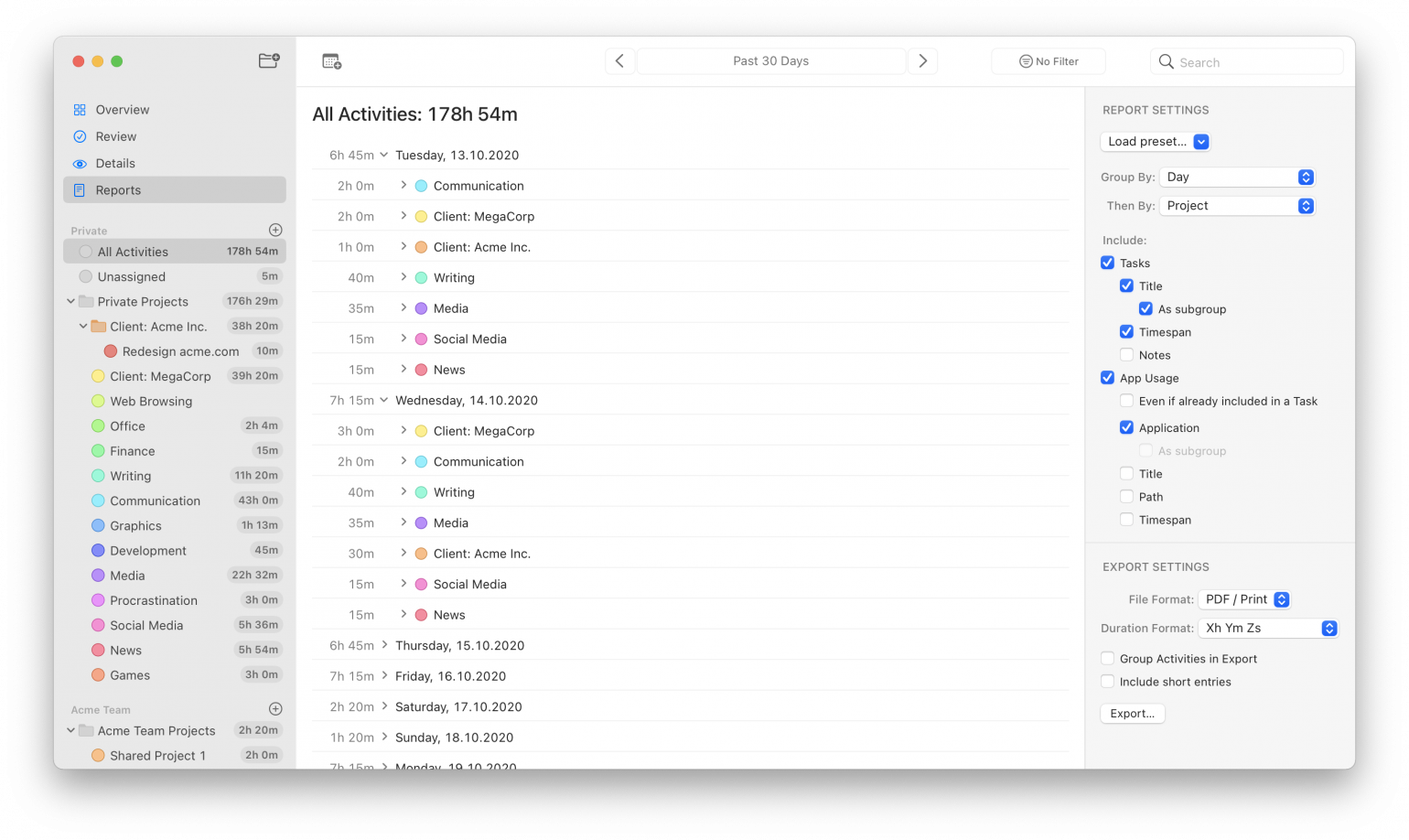How to Use Time Tracking for Better Freelance Job Bidding
![]()
Bidding on new jobs is arguably one of the most complex parts of working freelance. You need to send proposals to secure more work, but you don’t get paid for sending bids. Plus, there is plenty of rejection involved, making bids feel like an arduous chore.
Producing accurate bids will ensure you get paid what you’re worth, but first, you need a clear understanding of your time. You need to know how long tasks take to complete to factor into your proposals. If you get this part wrong, you could make a lot less money than you intend, or worse; you could even lose money.
For instance, let’s say you expect it will take three hours to write an article for a new client. But when you get into the task, it actually takes five hours. That’s two hours of unpaid time. If you knew the article would take five hours, you might have asked for a higher rate. Getting the time estimate right is even more critical for those who bill by the hour.
So how do you get a firm understanding of how you spend your time? Guesses and estimates are not good enough. You need to create your proposals from a data-based perspective by looking at your history. To get this information, you need to track your own time using time tracking software to get this information.
In this article, we teach you how to produce accurate freelance job bids by using time tracking software. These tips will make sure you are getting paid for your work.
In order to produce accurate bids that ensure you get paid what you are worth, you need a clear understanding of your time. Share on X
7 Tips to Produce Accurate Freelance Job Bids by Tracking Your Time
Tracking your time and using it to create your freelance job bids is actually not that difficult. You just need the right tools and process. Here are some tips to help you track your time and use that information to produce accurate freelance job bids.
1. Use Time Tracking Software
Your first step is to install and use time tracking software. Tracking is an essential tool to use for all freelance job bidding. It also offers several benefits that are useful throughout your entire freelance career.
The value of time tracking software is information. It helps you understand the real time cost of various activities. Many freelancers underestimate how much time a task or project actually takes, and they end up overbooking themselves or underbilling their clients. Tracking can help you avoid that.
Quality time tracking software will break down your time spent on each activity. It should also group activities together (as projects) to help you understand their total cost. For instance, a freelance designer might use multiple design tools (Photoshop, Illustrator, etc.), a drawing application for a tablet, and their web browser for research. Your time tracking software should have the functionality to group all of this in one spot to help you understand the total cost.
That is exactly what you get with Timing. If you use Timing, you never have to worry about inaccurate timesheets again. Timing automatically tracks your work, so you can reproduce what you worked on at any given time. There is no timer to stop or start. Timing is always recording your activity – every app, document, and website you use – including the full file path or URL. This way you have access to the best information.
(Keep in mind, however, that even though Timing collects data about your activity, our software respects your privacy. It doesn’t take screenshots or store your data alone. We certainly don’t sell your data. It tracks your activity for your eyes only. Data is stored locally on your computer only so you have full control over it. It’s entirely up to you whether you export and send it off to your team or clients.)

Timing is especially beneficial for better freelance job bidding. Timing automatically sorts your activities into categories. For instance, you could look up how much time you spent in front of Google Docs or how much time you spent looking at QuickBooks. You can also organize tasks into categories for clients and projects, which is a great way to look back at how you spent time in the past.
Here are some quick tips to get the most value from your time tracking software. These best practices will make your freelance job bidding faster and more accurate.
- A good time tracking app like Timing should manage your team’s time as well (while preserving their privacy). This feature is essential to take advantage of if you work on a team to ensure that you total everyone’s time correctly for the bid.
- Use your time tracking tool to optimize your productivity. If you can work smarter, you can pass those savings on to your clients, making your freelance bids more competitive and more likely to be accepted.
- If you spend any time away working from your computer, make sure to add that time into your time tracking software manually. Doing this ensures you aren’t overlooking any time spent on a project.
- Integrate your time tracking software with your calendar, so it knows when you are in meetings. Be sure to add those time blocks to the correct projects and clients.
- If you use multiple devices for work, you must sync those devices together, so your total time spent is accurate. You will want to use time tracking software that stores your data safely in the cloud.
2. Consider the Project Requirements Carefully

Before giving an accurate bid, you must understand the project requirements. Without knowing enough about the project, producing a precise bid (including how long the work will take you) is virtually impossible.
Start with a kickoff conversation with the potential client. Your goal here is to get the basics. What are their problems? What are their needs? What do they consider success? Capture as much information as you can. Don’t be afraid to ask lots of questions. Take careful notes.
Later, review your notes carefully and conduct some independent research. What do you think the project requires? What challenges and obstacles will you face? What resources or materials will you need to complete the project? Look back at previous projects to identify activities, requirements, or challenges you experienced in the past. Put together a list of questions you still need to be answered.
If you are trying to create a bid for a new kind of project, it helps to reach out to other freelancers who regularly perform this type of work. Ask them as many questions as they will endure, especially regarding challenges and time spent.
Once you have your thoughts in order, have another conversation with the potential client. Ask your new questions and propose any ideas you have to make the project more successful. Once you have as much information as possible, tell the client you will reply with a proposal and bid soon.
Depending on the size and nature of your project, some clients may have a bidding process they expect you to follow. There is usually little freedom in these cases, especially if you are trying to work with a government or government-funded agency. You will need to follow their processes carefully or risk having your bid ignored.
3. Decide Between Fixed Pricing vs. Time-and-Materials
How you charge for your services is just as important as how much you charge for them. You will need to decide whether to offer fixed or time-and-materials pricing. Each pricing model offers advantages and disadvantages, so you will need to choose the right one for your situation.
- Fixed pricing (or a fixed price contract) is when you deliver a product or service for a simple flat price that does not change. You can collect money at once or in installments, but the final total doesn’t vary. This model is useful for projects with clear deliverables and an unambiguous endpoint.
- Time-and-materials pricing is when you bill the client for your expenses plus an hourly rate. The hourly rate comes from the real-time you invest in the project. This model is best for open-ended projects with vague deliverables and expectations.
Learn more: Fixed Price vs. Time and Material: How to Charge Clients?
You are not required to stick to one pricing model or the other. You can use different pricing models depending on the nature of each project. For example, a developer might charge a fixed price to build an app. But for ongoing support, he would probably charge for time-and-materials.
If you decide to use fixed pricing for your bid, you will need a crystal clear understanding of how much time the project will take. If you fail to estimate your time correctly, there is a good chance you will earn less money than you expect since you can’t change the final total. (Technically, the final price could change if you ask the client for more money, but that’s generally thought of as a terrible way to conduct a working relationship. Some clients will refuse and hold you accountable for your original price.)
If you decide to use time-and-materials pricing, you have some leeway because the client will understand that you do not know precisely how long the work will take. Nevertheless, they will want some kind of time estimate to know if the project will cost less than their budget.
4. Create a Reasonable Time Estimate
The most important part of freelance job bidding is putting together the time estimate for your proposal. If you do this part well, you will ensure that you earn what you deserve from each project. It’s essential to get this part right, even if the client ultimately decides not to accept your freelance bid.
For the most part, you should rely on your past work. If building a restaurant’s website took you 18 hours in the past, chances are it will require the same amount of time today. You might be a little faster, but not by much.
Next, consider any differences between today’s projects and past projects. For instance, if today’s restaurant website requires an online ordering feature while previous websites did not, then today’s site is going to take more than 18 hours. Similarly, if a prior site project required six pages, but today’s only requires three, it will likely take less than those 18 hours. You’ll need to adjust your time estimates based on each of these differences.
5. Pad Your Estimate with Some Extra Time
No matter how similar a project may seem to previous projects, there is always the chance of unexpected problems and unavoidable detours. We often don’t know exactly what a project will take until we are deep into it. For this reason, it’s important to add a little extra time to your estimates to ensure that you meet your deadlines.
Whenever you make a time estimate, it is best to use the T+X approach. T refers to your internal deadline. This is the day you expect to complete the project. X refers to the day you tell the client the project will be complete. Replace the X with a number that seems reasonable.
For example, let us say you set a T+2 deadline where T refers to Monday, March 14th. That is the day you plan to complete the project on your end. However, you would promise the client to deliver the project two days later on Wednesday, March 16th. If you complete the project on Monday, the client receives the work two days early. But if you run into unexpected problems, you still have two extra days to deliver without being late.
You should adjust your T+X approach depending on the nature of the project. A web designer might use T+1 for web designs and T+7 for completed websites. This ensures there is always a reasonable amount of buffer in their schedule so that clients always get their work on time.
6. Defend Your Time Estimate
In some cases, a client may ask you to explain your bid. They want to ensure that you treat them equally by charging similar prices. If you have been using time tracking software, this should be simple.
Produce reports from similar past projects. Use these as evidence for how long the new client’s project should take. Doing this will reassure the client that you are not adding extra hours to their bill to run up the price.
With Timing, generating reports is simple. Select the Reports tab in the sidebar. This screen allows you to create a report quickly with one of the built-in presets or customize the report to your liking. Once you have built your report, you can export it in different file formats. Then simply send the exported document to your prospective client.
Learn more: Generating Reports and Exports with Timing

That said, be sure to stand up for yourself if clients demand too much evidence to support your bids or if your clients ask for a lower hourly rate. You are not required to serve every request from a potential client. If the deal is bad, don’t be afraid to walk away.
7. Negotiate Until You Are Satisfied

Negotiating is fine – even expected – in most situations. You can negotiate timeline, project milestones, deliverables, payment dates, availability, communication, and most everything else. If a client asks for more in one area, don’t be afraid to ask for a concession in another.
However, keep in mind that your time investment will not change unless you reduce the project’s scope. Be wary of any requested reductions in your hourly rate or fixed price if the client is unwilling to reduce or eliminate some of their expectations.
The timing and duration of the project should also affect the bid price. For instance, if a client requests a fast turnaround for one or all of the project deliverables, it would be appropriate for you to charge a higher rate. But when a client gives you a generous amount of time to complete the project or no defined deadline at all, they will expect it at a lower rate. You can negotiate all of these variables. This is another reason why it is important to have a clear understanding of how long the project will take.
Whatever you do, do not underbid in your eagerness to win the project. It may seem like a good idea at first, but you will regret it once you start working on the project. You may feel compelled to work faster and produce lower-quality work in order to “make up” for the lost revenue. Besides, most clients have a budget that they are comfortable spending based on what they think the project will cost. If you come in too low, they might worry that you’re not a quality freelancer who can deliver the level of work they need.
Wrap Up
Admittedly, even with a vast store of past data to look into, creating accurate time estimates is a learned skill. You’ll need to practice for a while before creating accurate estimates every time, so don’t be discouraged if your first estimates aren’t perfect. The data from your time tracking software will remain the best place to start. Use the tips outlined above to create accurate freelance job bids, land new clients, and get paid what you’re worth.
